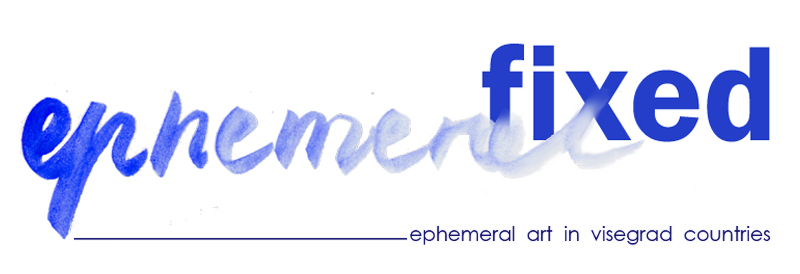




It happens
As part of the project there took place 2 performance art nights by invited artists from Czech Republic, Poland, Slovakia and Hungary.
Invited artists:
Jiri Suruvka, Marek Prazak, Jana Zimcikova (CZ)
Jozsef R. Juhasz, Daniel Dida, Linda van Dalen (SK)
Balint Sombati, Imre Denes, Peter Valyi (HU)
Jozef Robakowski, Adam Klimczak, Anka Lesniak (PL)
The meeting officially started on March 15th, at 6 pm with a performance entitled "A sign of the times" by Adam Klimczak,
the owner of the host Wschodnia Gallery. It was kind of an introduction to the subsequent actions.
Klimczak started his performance on the ground floor of a staircase (the Gallery is on the first floor).
Crawling up the stairs on his knees, at each step he listed a sequence of dates - from the date the Gallery
emerged (1984) to 2012. Then he entered the gallery and walked around it, touching the Gallery walls and listing
the names of all the artists who presented their art in the space. Among the listed artists there were Jan Berdyszak,
Mimmo Catania and Peter Downsborough. It's worth mentioning that the Wschodnia Gallery organised the well known
Construction in Process festival and during the time of communism and the iron curtain, this gallery was
a kind of bridge between Polish and foreign artistic communities.

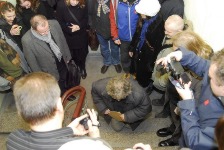
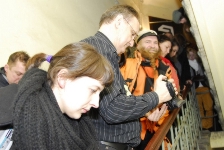
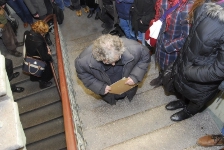
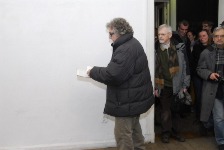
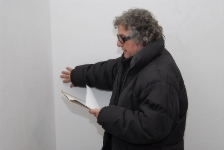
After Adam Klimczak there was a performance by Marek Prazak from the Czech Republic,
who presented a musical performance that included voice modification effects and the
use of props like a cello and a huge suitcase out of which he took some items.
The performance was entitled "A Mass for Poland". It was an adaptation of the composition
"Missa de Profundis" interpreted by the artist. The action was based on the absurd and that
is why it evoked associations with Dada and Cabaret Voltaire. The artist, dressed in shining
"decorative clothes", resembled a bard, shaman or a minister, but the image was a grotesque
figure at the same time. The action was very dynamic, full of unexpected turns.
It was funny and scary at the same time.
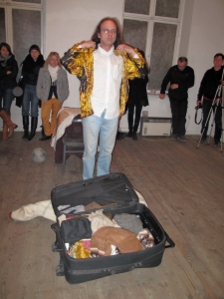
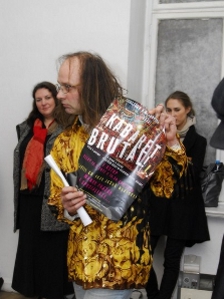
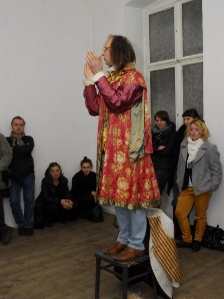
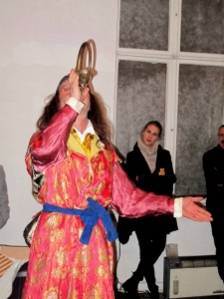
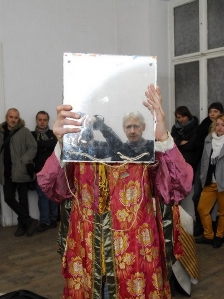
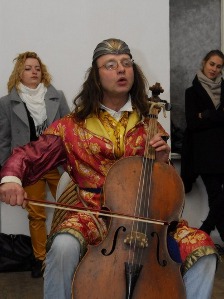
For the entire evening there was a durational performance by Daniel Dida from Slovakia
entitled "Take away breath". One could take away the artist's breath in the form of a transparent
plastic bag blown into by Dida. He filled subsequent bags with his breath and left them in
various spots in the Gallery. At the end of the day there were so many of them that they formed
a kind of "in situ" installation. This simple action of Dida's, based on one gesture, provokes
questions about the essence of ephemeral art; even if it leaves objects or documentations,
the basis of its creation and reception is the presence of the action in this particular place and time.
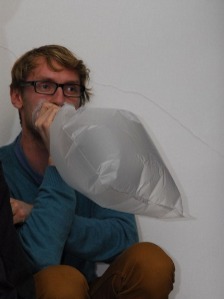
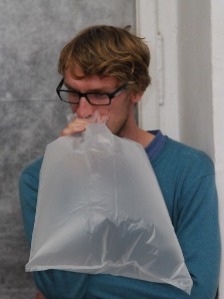
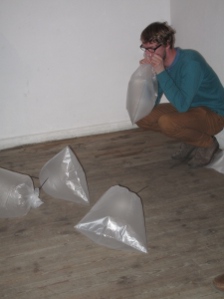
Peter Valyi from Hungary presented a performance entitled "Strong Nations".
He asked four people from four countries to read the lyrics of their national anthem. The "nations' representatives"
were Jiri Suruvka (Czech), Gordian Piec (Poland), Linda van Dalen (Slovakia) and Katalin Balazs
(Hungary). The anthems were read simultaneously. The loudest was Gordian Piec's reading (maybe
because Poland has the largest territory out of the four Visegrad countries). Jiri Suruvka put
in the most heart and creativity in his anthem. In fact, Peter Valyi's performance started earlier -
during the lunch in a restaurant. The artist waited until everyone left the table, then gathered up
and ate all the leftovers. He recorded a video on his cell phone from this situation and on the
same phone he presented this video in the Gallery.
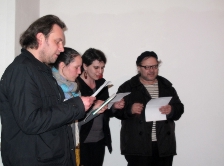
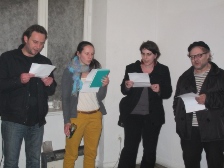
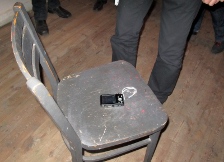
Linda van Dalen (Slovakia) performed her action with the co-operation
of Emil - Jiri Suruvka's dog. Out of dog food she formed words on the floor.
It was difficult to read them, as Emil ate them immediately. Then she painted
the same words with white paint on the white walls: "I breathe, I feel,
I came here to live", a reference to her asthma. When the paint dried,
the words became invisible. Just like Dida, the artist touched upon the subject
of presence and fleetingness, bringing to mind the saying "carpe diem".
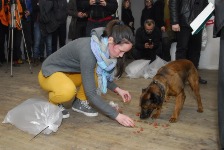
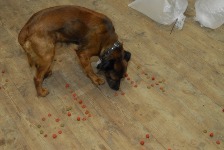
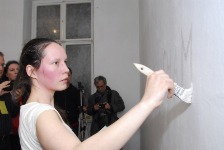
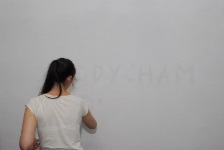
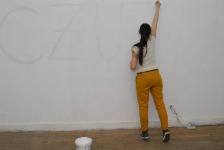
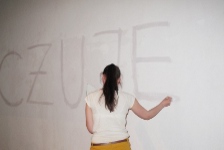
The evening ended with a performance by Jiri Suruvka. It was a coincidence,
that Suruvka was going to perform once again in Lodz two weeks later -
in the Manhattan Gallery. Therefore he suggested a performance in episodes entitled:
"Jorje, the life of an artist - a soap opera". His action started with a story about his mother,
who began to look at the world from the perspective of a soap opera. The Latino artist
"Jorje" from the title was in fact Suruvka (Jiri is Jorje in Spanish). According
to people's imagination and what is often shown on TV, an artist is a guy who sits
at an easel and paints a model. A model should of course be naked and fulfill
a lot of roles in the artist's life. The artist is constantly tired and
it's hard for him to finish his work and therefore to sell it. Even if he
finishes his work, no one knows if he finds a client to buy it. The task is difficult,
a portrait has to be as good as Mona Lisa, in order to please the buyer's taste.
Other heroes of the soap opera were a model, art merchant, police woman,
punk, domina-woman and death. The roles were "played" by members of the public.
There was no script, so Suruvka's action thanks to the audience's intervention,
turned into a never-ending story. Here also the context of place and the
element of the unexpected in art action had their meaning. The main prop
was Suruvka's easel, owned by Adam Klimczak. But because the last time Klimczak had
used his easel was when he was in the art school (and since then it remained in the basement),
it almost fell apart when it was unfolded for Suruvka's action.
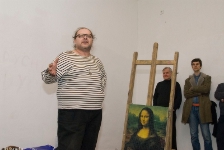
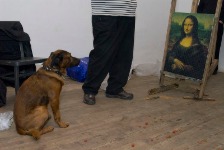
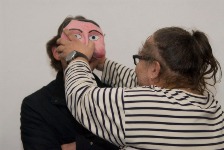
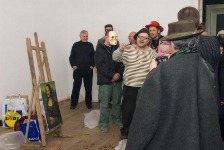
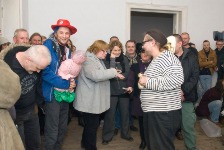
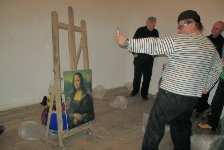
The second evening of performance art began with the action
of Anka Lesniak in co-operation with the PUL Group (Paulina and Ula Korwin-Kochanowski and Ludwik).
The main part of the action took place in a corridor covered with a black cloth.
The audience was asked to enter from the staircase one person at a time. They saw
three women - one naked with her eyes covered and two totally covered like Muslim women,
with only eyes uncovered. A CD played one sentence that had been recorded: Take a
lipstick and write on my body the first word that comes to your mind when
you hear the word "woman". Then each spectator received two pieces of paper joined with a pin.
He/she was requested to keep quiet and not to unpin the paper until the action ends.
Then each spectator entered the main room of the gallery, where there was a video
projection with body imprints of the artist and words like: freedom, independence,
money, power_ In the end, Lesniak entered the main room as well and on the wall
placed a sentence: Which of these words have you written?

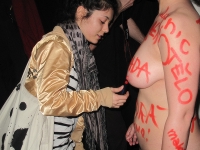
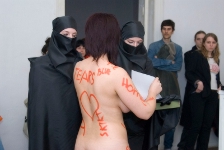
Then there was an action by Jana Zimcikova from the Czech Republic.
Her performance was based on one gesture. As her prop the artist used ladies tights.
One pair she wore normally - on her legs, the other on her arms and head. She tried
to free herself from the layers that were limiting her movements. In the end the
tights were torn and she gained back her freedom. This is how she ended the action.
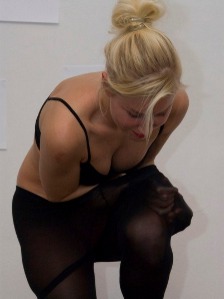
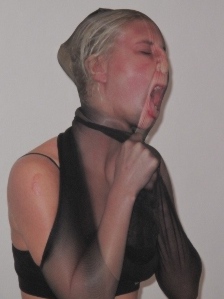
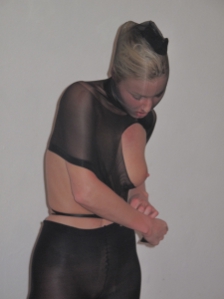
Balint Sombati from Hungary made a
performance which was very economic with gestures.
He sat on a table and showed the audience a colourful heart made
of ginger bread into which he placed a mirror. To the rhythm of
a love song, he ate the heart until only the mirror remained.
Then he started to cut his fingers with the mirror and then,
in a complete silence, smeared the blood on his cheeks marking tears.
The combination of a frosted mirror heart and true blood is a bold contrast.
On one hand it may be kitsch, on the other it may symbolise, love and suffering -
very often inseparable emotions. Whose reflection is in the mirror? The artist's or our own?
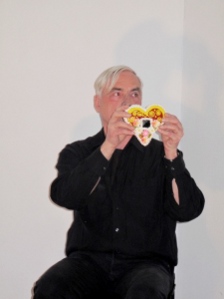
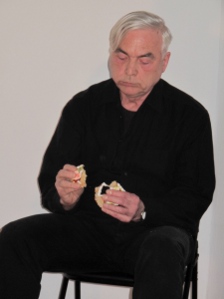
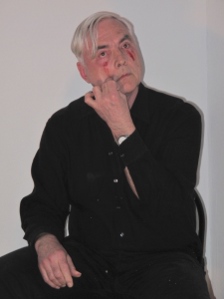
Next we saw a performance by Imre Denes from Hungary.
The artist based his performance on sounds, gestures and the
use of symbolic materials such as grains and milk. The performance
resembled a ritual. The longest part of the action was the moment when Denes stood
under a plastic bag hanging from the ceiling which was filled with milk that
dripped on his head. He was showing various gestures with his hands and the action
was accompanied by music composed of far-eastern sounds. The artist also used props
reminiscent of far-eastern culture, for example artificial, song birds. He spilled
grains on the gallery's floor to end his action.
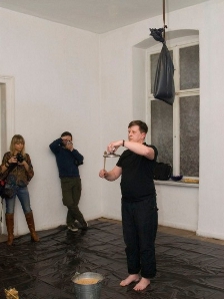
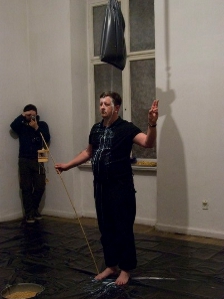
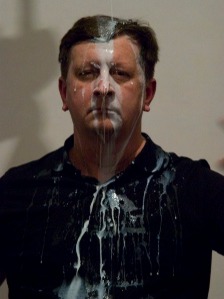
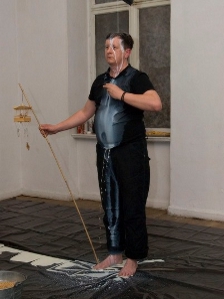
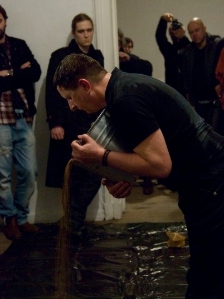
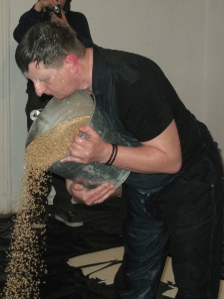
Jozsef R. Juhasz presented a performance entitled "Trust 2012".
He started by using nails. He moved around chosen people from the audience, with the 30 cm nails.
Meantime he wrote on an illuminated screen words, that in the end made a sentence "If you see something, say something"
(which is the sentence that one may come across in the New York subway system after the 11/9 attacks).
He approached a cube consisting of a few blocks of paper and he drew on the edge a paragraph symbol.
Then he put two nails to his eyes and asked a person from the public to blindfold him with a white band.
He undressed himself and stood for a while holding nails in one hand and a piece of paper in the other which
had the sentence written on it.
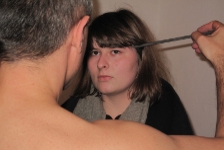
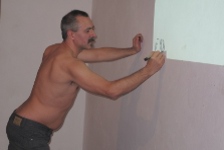
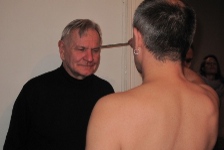
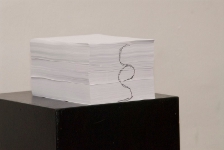
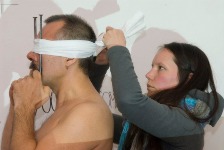
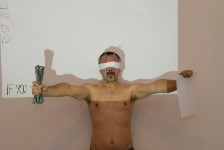
The evening was finished by Jozef Robakowski who presented the documentation
of his performance "I'm electric", in which he subjected himself to electricity
of higher and higher voltage, increased by the members of the audience (the performance was
done in a tv studio). As he mentioned, the impulse for the action was the fact that he suffered
an electric shock in the past. After that Robakowski presented one work from a series of performances
to camera that are characteristic for him. On the video we saw the artist with his head laying
on a keyboard. Moving his head he produced low, monotonous sounds. The sounds encouraged his
cat to participate in the action. Walking on the keyboard made his "cat's music".
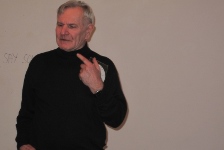
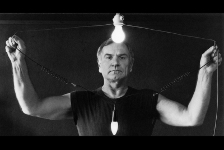
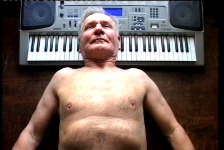
a report prepared by Lodz-art
translation: Malgorzata Kazmierczak, Anne Seagrave
photos: Norbert Trzeciak, Jerzy Grzegorski, Adam Klimczak, Pawel Hartman, Malgorzata Kruszyniak, Anka Lesniak












